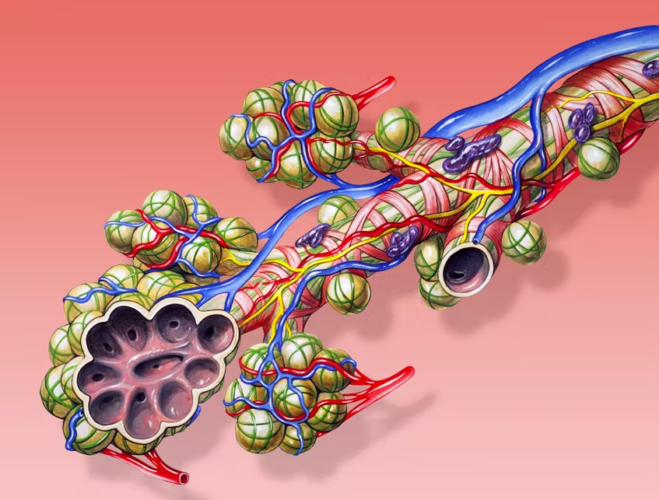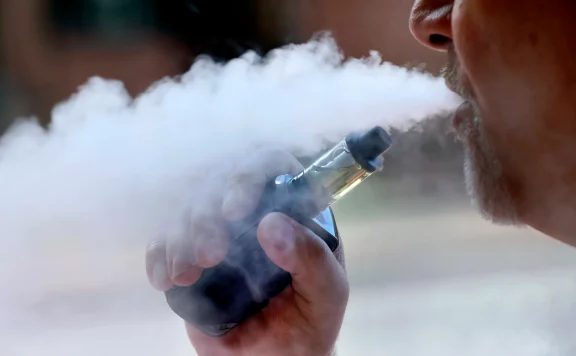Are aware of the effect of vaping on your lungs if you’re between the ages of 18 and 25?
Halifax researchers are trying to address that issue using a technology that researchers believe will disclose the precise effects of vaping — right down to the microscopic lung sacs that are not touched by standard tests.
According to Dr. Sanja Stanojevic, an assistant professor in Dalhousie University’s community health and epidemiology department, individuals under the age of 25 have growing lungs that are extremely prone to potential injury.
Stanojevic heads a Dalhousie University study that employs a test known as multi-breath washout, which has been employed since the 1960s to assess initial lung problems associated with diseases like cystic fibrosis.
“What distinguishes this test is that it is exceptionally good at finding harm to the extremely small airways,” Stanojevic explained in a recent interview, in contrast to standard lung examinations in doctors’ offices and hospitals, which detect well-established harm in large airways.
“We know that the chemicals in vape pods are safe to consume; otherwise, they wouldn’t be on the market.” We don’t know what occurs when those compounds vapourize. And there is also preliminary evidence that when the flavors and compounds in the liquids are vaporized and mixed together within the lungs, they produce even more compounds than what is contained in the devices.
“Now, our test won’t measure what those chemicals are; we’re only interested in how they damage the lungs, but we also know that even things like the metal coils used to heat liquids to vaporize them, those minute metal particles become deposited in the lungs.”
What is contained in the vaping pod? Based on the flavor as well as other attributes, nicotine, propylene glycol (an ingredient that helps to preserve moisture and flavor), glycerine, which aids in the production of vapor, and a variety of additives ranging from analog, the active ingredient in erectile dysfunction drugs, to metals such as chromium and lead can be found.
Stanojevic’s research will focus on two types of individuals aged between 18 to 24. One category will be persons who routinely consume vaping pods, while the other will be non-vapers with healthy lungs who just don’t smoke.
“We’re looking at those who only use pod inhalers so we can get a better picture of how much is used.” And we’re asking individuals how many breaths they take, the number of times they vape per day, and we’re attempting to determine how much is ingested by the lungs.”
She expects to have roughly 50 participants per group by the end of 2022 or the beginning of next year.
According to the Lung Association of Nova Scotia, roughly 37% of Nova Scotian students in Grades 7–12 have used an electronic cigarette at least one time, which is 61% greater than the equivalent rate across all Canadian students within this age bracket.
There is limited information concerning the effects of vaping on the lungs and if it might chronically harm them. However, studies show that the behavior is dangerous.
In 2018, the National Academies of Science, Engineering, and Medicine issued a review of more than 800 papers.
According to the American Lung Association, “that report made clear: using electronic cigarettes increases health concerns.”
“It came to the conclusion that electronic cigarettes carry and release a range of potentially harmful chemicals.” According to the Academies’ study, “there is moderate evidence that kids who use electronic cigarettes have a higher risk of wheezing and coughing as well as a rise in asthma exacerbation.”
In 2020, the Nova Scotia government will prohibit the sale of flavored electronic cigarettes and liquids. The decision was based on studies that found that 95% of young Nova Scotians who vape prefer flavored liquids and that more than 48% would stop if flavors were outlawed.
Stanojevic aspires to publish the findings of her team’s research in a scholarly journal by the middle of 2023.
She stated that her appeal for participation had a positive response, but that recruiting is still underway.
“We know from our longitudinal studies, in which we followed people from birth all the way into their 50s and 60s, that people who don’t reach their maximum lung function in early adulthood… have a much greater propensity for lung disease, for developing chronic respiratory conditions later in life,” she stated.
“We understand that group is far prone to die younger, and therefore we need to know whether vaping is affecting (them), if or not a particular generation is going to struggle to reach that optimum lung function, and simply by that nature, we understand that will also potentially lead individuals to lung illness later on.”






